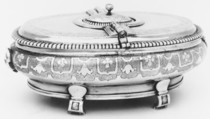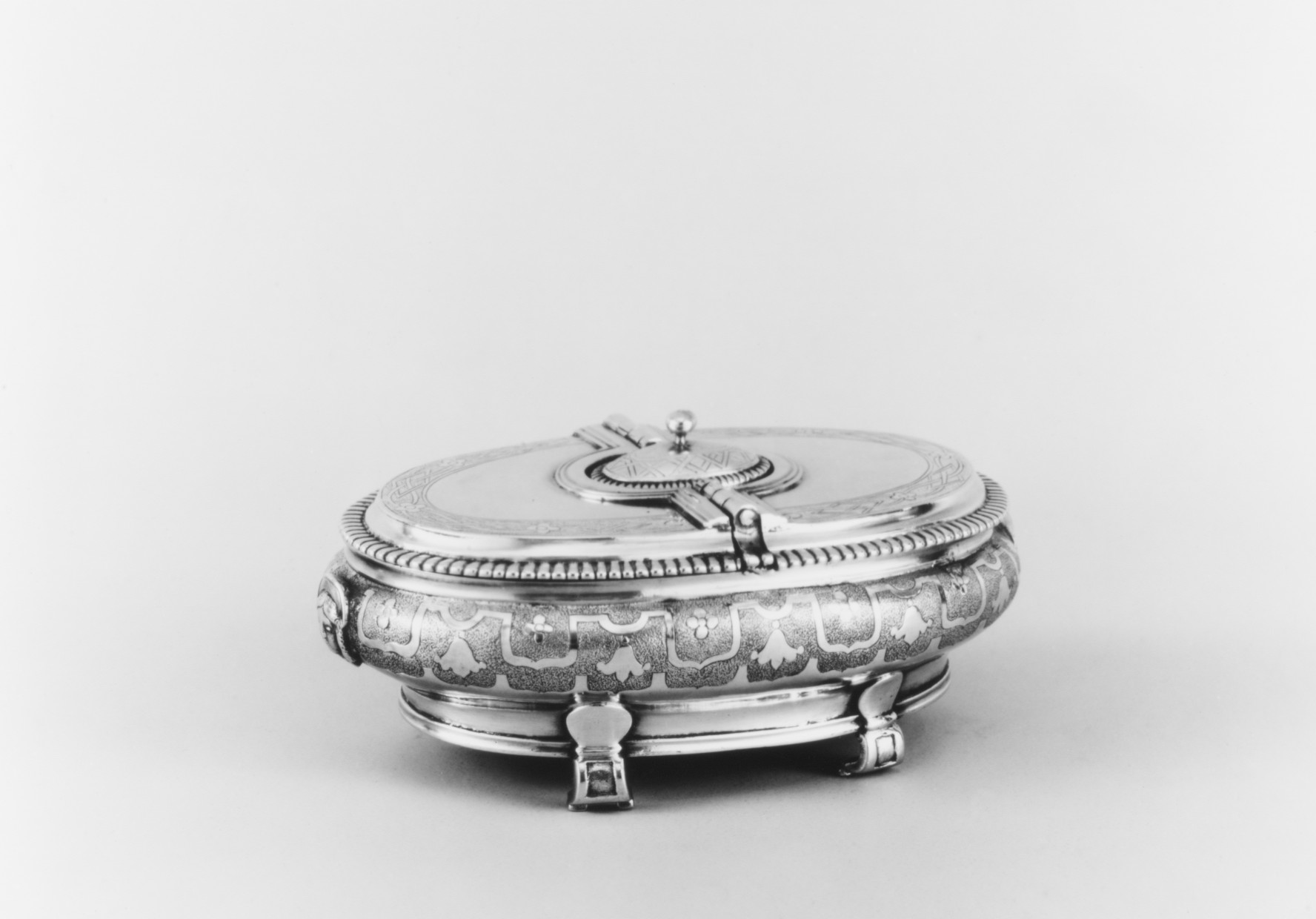Spice box with grater
Not on view
By the late 17th century, salt, which had been contained in extraordinarily ornate receptacles during the medieval and renaissance periods, had lost its prior ceremonial significance. Changes in customs and dining practices led to spice and condiments being used at the diner’s discretion.
Spice boxes such as this example with its ornate engraving may have been part of a large centerpiece or surtout. Other components of a surtout might include matching cruets for oil and vinegar, salt, and pepper boxes, as well as elaborate vessels or tureens supporting candle branches all standing on a decorative tray.
The inside of this box is divided into three compartments, one large and two smaller. The Dictionnaire françois by Pierre Richelet of 1680 defines a poivrier as a small piece of goldsmith work to contain white pepper, while a boîte à poivre was described as a box with divisions for pepper, cloves, and nutmeg. The cylindrical grater in the center would allow nutmeg to be freshly ground at the table.
Daughter of one of the founders of the Weyerhaeuser Timber Company, Catherine D. Wentworth (1865–1948) was an art student and painter who lived in France for thirty years. She became one of the most important American collectors of eighteenth-century French silver and on her death in 1948 bequeathed part of her significant collection of silver, gold boxes, French furniture, and textiles to the Metropolitan Museum. The collection is particularly strong in domestic silver as illustrated by this spice box.
Due to rights restrictions, this image cannot be enlarged, viewed at full screen, or downloaded.
This artwork is meant to be viewed from right to left. Scroll left to view more.



